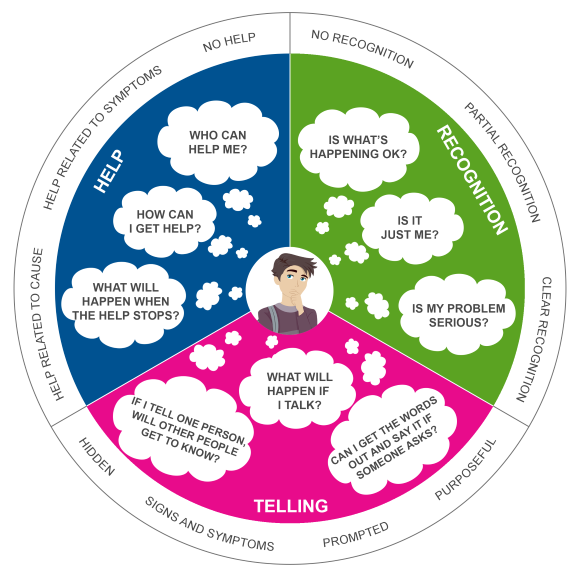The iCAN Framework
Based on key findings from the research, ‘It takes a lot to build trust’, we developed a framework to understand what it is like for a child or young person experiencing abuse.
The iCAN framework has three areas, recognition, telling and help. When you’re worried about a child or young person it is important to think about what they might be thinking and feeling - does the child recognise that there is a problem? Are they they able to talk about it? What do they think about the help you offer? In each area of the framework there are examples of how a child or young person might be weighing things up.

)
)